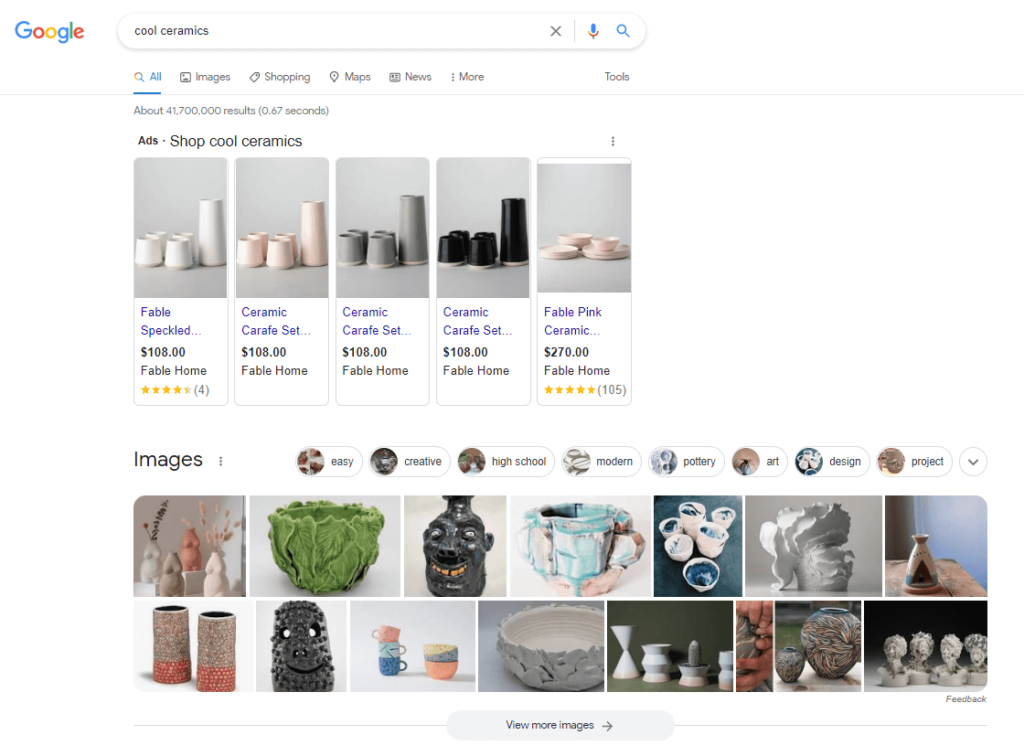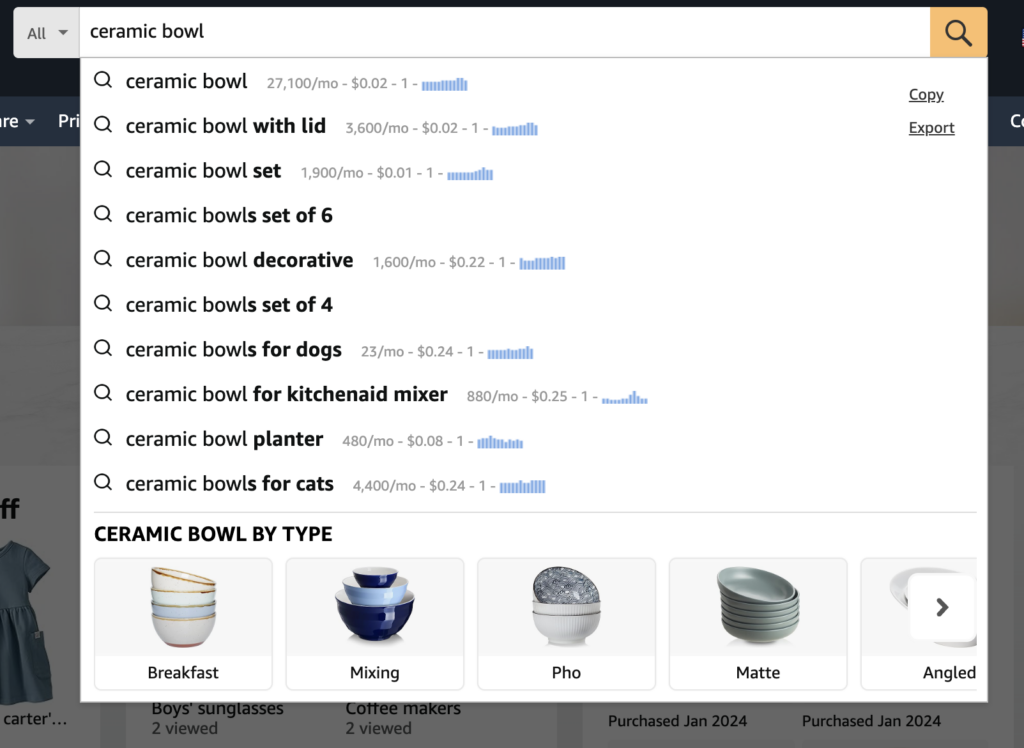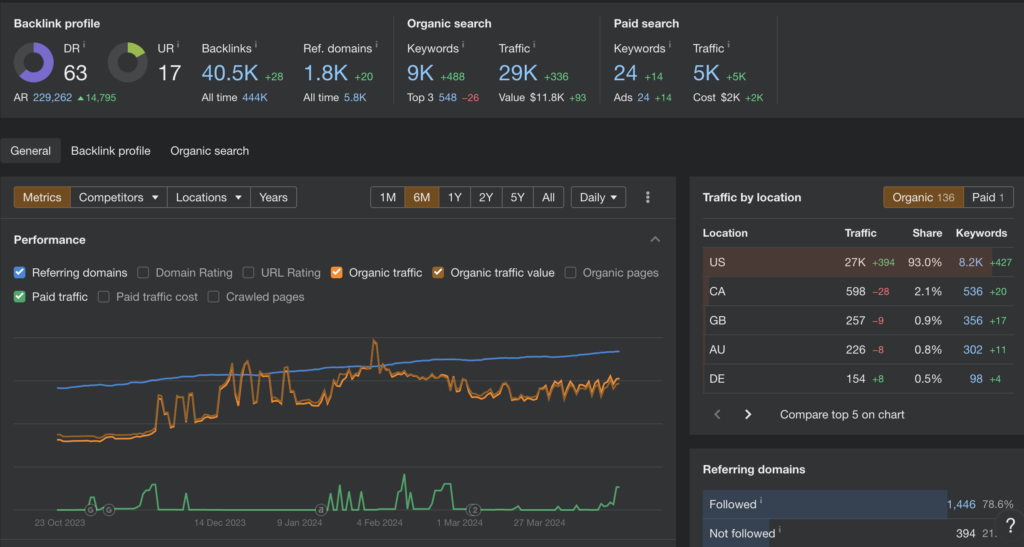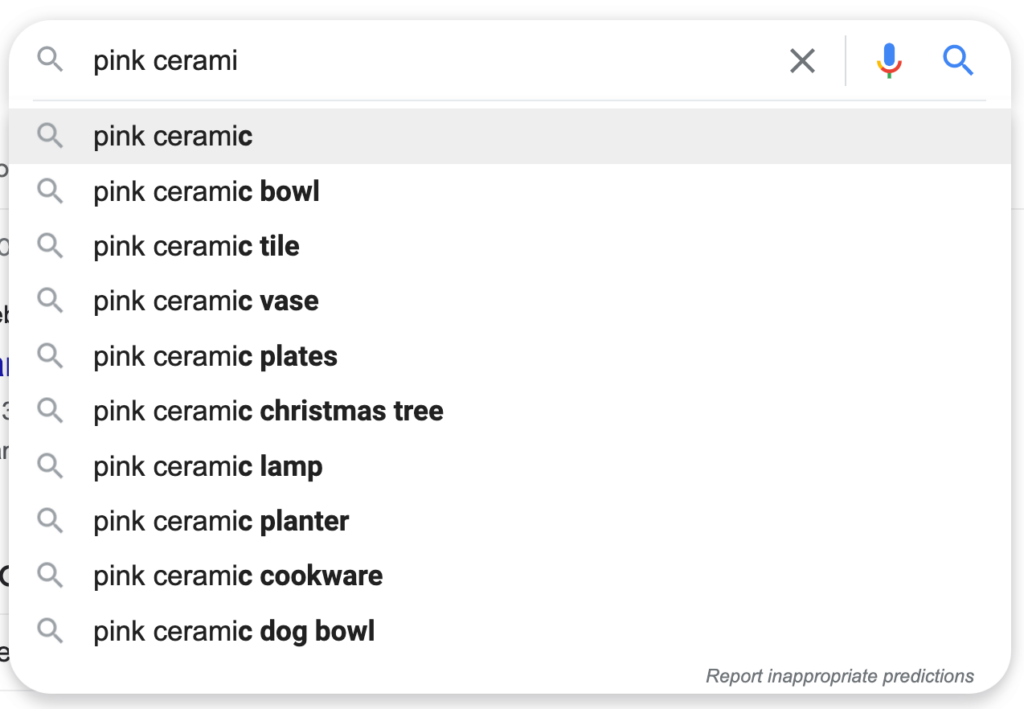SEO Savvy: Ecommerce SEO is crucial for transforming a budding business into a major brand, regardless of the product offered.
Beyond the Rock: Understanding and implementing SEO is essential for ecommerce success, especially for those unfamiliar with the term.
Brand Blossoming: Investing time in ecommerce SEO strategies is key for brands aiming to stand out and grow in their market.
One of the most important things ecommerce brands need to get right above all else (aside from your lovely products) is your ecommerce SEO (that’s search engine optimization, for those hiding under internet rocks).
Whether you’re selling colorful ceramics, or one-off custom shaggy rugs, taking the time to think about your ecommerce SEO strategy will help turn your budding business into a major brand in your chosen space.
Here are some initial steps you need to take to get started on your ecommerce SEO campaign strategy.
We’re going to cover every aspect of ecommerce SEO, from keyword research and on-page SEO to technical tinkering and off-page tactics. Aided by some expert quotes, we’ll get you on the right foot for a successful strategy.
Let’s dive in!
What is Ecommerce SEO?
Ecommerce SEO is the process of improving various aspects of your online store to rank on search engines (like Google and Bing), thus driving organic traffic.
Every site needs a bit of tinkering behind the scenes so people can actually find it.
But, ecommerce sites take even more tinkering, what with all the product categories and product pages necessitating smart hierarchical site architecture and great navigation and site search functionality.
To start off, you need to target the right keywords in your content so Google can crawl your site, learn more about what it’s like, and how it will be useful to people who are searching for certain topics.
A hypothetical ecommerce SEO case study: Meet Carl
Here’s a case of someone who isn’t up to date with the power of ecommerce SEO. Let’s call him Carl.
Carl wants to start a business selling colorful ceramics. He gets a lot of positive feedback from friends and family and decides to start his own online store.
He decides to call his business Carl’s ceramics and sets up his website quickly, excited to increase his sales.
But instead of getting orders, his site traffic is nil and he can’t figure out why. People love Carl’s ceramics and regularly compliment him on his high-quality offerings.
But Carl’s business is not well known on the internet.
There is no one actively searching for ‘Carl’s ceramics’ (not a popular search term, unfortunately) so, instead of relying on his reputation, he’ll have to work on figuring out what his undiscovered audience is typing into Google search that will lead them to his online store.
In SEO terms, he’s an unknown.
Expecting customers to find your site without building out an ecommerce SEO strategy is a recipe for disappointment.
It’s not any different from opening up a brick-and-mortar store without any signage or flyers announcing what your business is about.
The online space is incredibly competitive but, if you can find the right mix of relevant keywords to attract your target audience at every stage of the sales funnel, you will be able to break through the noise and reach new customers.
Carl went back to the drawing board to think about what customers could be typing into Google Search that would help his ecommerce SEO strategy and lead searchers to find his classic clay creations.
Perhaps customers would search by color (e.g. pink ceramics), or by size (e.g. super large ceramics) or price (e.g. affordable ceramics).
Or maybe they’re at a point where they don’t know exactly what items they are looking for?
(Full disclosure: We may have gone down a ‘cool ceramics’ rabbit hole when writing this article.)
How Important is SEO for Ecommerce Brands?
In short, very. Ecommerce SEO is a requirement for getting organic search visibility. Plus, it’s essentially free (aside from the labor and costs of creating the content).
Sure, you can always pay to be on the first page by running Google ads but you will burn out of cash fast, especially if you are a small business.
Nothing beats creating consistent high-quality content that will bring in traffic over time.
Taking the time to fill out your product pages, and other key areas of your site, allows Google to crawl your site and make informed decisions about what your online store is all about.
Not only is this creating sustainable passive traffic, but it frees up more time for you to work on other aspects of your business like your product packaging or figuring out how to express ship to Siberia (there’s people there too!).
Once your organic search traffic starts to grow, that will be another signal to Google that people like your site and find it useful or interesting, allowing your search ranking to soar.
Once you find yourself on the first page of Google it becomes infinitely easier to capture more sales and find more new customers. Your SEO efforts will be rewarded if you do it right.
Ecommerce SEO Metrics to Track for Success
Just as with any marketing discipline, you can’t do it blindly. You need to track your successes (and failures) with good SEO metrics.
The metrics you use can come from various sources, like:
- Google Search Console. Free to use after verification, Search Console shows you all the important information about how you do specifically in Google Search for search queries and specific pages.
- Google Analytics. Also free, GA is a bit more complex to master. It has many metrics that you can track over time, down to the conversions attributed to specific pages (events you need to set up to track).
- Ahrefs or SEMrush. These SEO tools are where you can track your website rankings in Google for various keywords and snippets, as well as the backlinks you’ve earned.
Within these tools, the metrics you’ll want to look at are:
- Organic clicks
- Organic impressions
- Clickthrough rate (CTR)
- Keyword rankings
- Backlinks earned (or lost)
- Organic pageviews
- Users
- Bounce rate
- Engagement time
- Conversions (from newsletter signups to product purchases)
Seeing your SEO metrics over time as you build out your search strategy will give you a sense of how impactful you are in your work.
How to Build a Powerful Ecommerce SEO Strategy
There are many parts to a successful SEO strategy. As we mentioned, you need to research your niche’s keywords and build great content targeting those topics. But, that’s just the beginning.
Your ecommerce company can only benefit from the tips and tricks of some of the best people in the trade, so we’ve peppered in expert quotes throughout to add that dimension.
Understanding SEO guidelines, SEO ranking factors, and organic SEO along with the bonus support from trusted leaders means you can build your online presence, increase site traffic, and optimize customer visits.
The big rocks of your SEO strategy are keyword research, on-page SEO, off-page SEO, and technical SEO. We’ll go through them in that order, breaking them down into their own smaller parts. So, let’s get started.
1. Ecommerce keyword research
Keyword research is crucial when building out your ecommerce strategy. Try to get into the head of your customer to figure out what their needs are first.
Ask some questions like:
- How old are they?
- What problems are they facing on a daily basis?
- What benefit would they find the most attractive?
These are all important questions to ask yourself during a keyword brainstorm. You can come up with this list yourself or ask those around you: what would you be typing into Google if you were looking for my product?
Your keyword ideas can then be mapped across your store, from the high level target keywords for your homepage down to the more specific (long tail) keywords on your product pages.
Short tail vs long tail keywords
Keywords can be separated into two broad categories: short tail or long tail keywords.
General (or short tail) keywords are broad e.g. “ceramics”, while long tail keywords are a more granular phrase or a sentence like (e.g. pink ceramics with white flowers).
Long tail are more niche and therefore demonstrate that the searcher knows exactly what they are looking for and their search intent is high.

Keywords serve as indicators of what your site is about.
Use them strategically and it will be easier for Google to categorize you within your niche and display your site links when there’s a good match between what you are selling and what someone is searching for in the search engine.
When building out an ecommerce SEO strategy, you will want a good mix of short tail and long tail keywords.
Short tail, to attract those buyers who aren’t sure what they are looking for and long tail, for those who are ready to pounce and convert since they have found exactly what they are looking for.
In Carl’s scenario, someone who knows exactly what they are looking for may use a long tail keyword like ‘purple ceramic vase 25cm’ demonstrating that the searcher is set on the color and size they want.

While others searching for ‘cool ceramics’ are casually browsing for inspiration but aren't set yet on what they want. You’ll want to cater to everyone to capture the maximum amount of search traffic.
Take to Amazon for keyword research
The second biggest search engine in the world (when you lump YouTube in with Google) is Amazon.
Plus, it’s a massive ecommerce marketplace. So, the insights you can pull from Amazon will be super useful as you uncover your ecommerce keywords.
Simply start from your verticals top level category and search, taking note of autocomplete keywords and relevant filters that come up for them.

You can also start from product categories and work your way ever narrower to both find new keywords and a clear idea of category structure.
Do content gap analysis to research competitors
Using your favorite SEO tool, you can not only find out who your competitors are but you can see what they rank for that you don’t.
Especially as you build out a decent content marketing strategy, content gap analyses are the easiest way to find out what content you should be creating and what product keywords you need to go after.
Where general keyword research is more blue sky and open for coming up with keyword ideas, this strategy delivers actionable content topics right away.
Keyword research tools
There are tons of SEO tools these days. And they’re all pretty good at SEO, unsurprisingly. So you can find them easily with a simple Google search.
But, I’ll tell you some of the best tools I’ve found for keyword research, a central function of any SEO tool.

- Ahrefs or SEMrush. These powerful paid tools are both really great for keyword research, but it’s hard to say which is best. For each keyword, you get a monthly search volume and the competitiveness for that term. Plus, you can see search intent, which will show whether searchers are looking for information or to purchase. As a bonus, you can get a site audit to identify major issues.
- DataForSEO’s Google Trends API. This tool provides valuable insights into search trends and popularity over time, allowing you to go after keywords that are about to blow up. You can also do research on Google Trends yourself for free.
- Exploding Topics. Similar to Google Trends, Exploding Topics shows tons of topics with their trendlines. Paid customers get even more results, helping ecommerce operators stay on the leading edge of their industry.
- Google Search. Or why not use the tool your potential customers are using to find insights into your keywords. By adding a main topic and playing with autocomplete, you can see other opportunities for free.
- Keywords Everywhere. Paired with Google Search, Amazon, YouTube, and many other sites, Keywords Everywhere is a Chrome Extension that will show you search volume, CPC, Competition, and trend data over time. The cost is very low.

These tools also allow you to see search trends over time.
This will save you a lot of time and prevent you from guessing what keywords are worth going after and which ones are duds.
2. On-page & product page ecommerce SEO strategies
With all your keyword data in hand, you can move on to the execution of your SEO plan.
Split up your keywords by search intent, with informational keywords slated for your blog content and commercial keywords to be applied to product pages.
Abide by the product page SEO checklist
Let’s start where the money is—your product pages.
As I mentioned, informational intent keywords will be misplaced here. Your commercial keywords will move the needle quite nicely though.
Here’s a little handy checklist to get you started when creating your product pages. Make sure you have your target keyword in these areas on your product page:
- URL: Use your target keyword in the URL slug. Keep it short and ensure it’s clear to shoppers what it is.
- Title: Use the title as an opportunity to describe your product using your target and secondary keywords.
- Heading tags: Headings are a great way to include long-tail keywords which can include commonly asked queries by potential customers. By treating product pages as longer form landing pages, you can add more content that’ll rank.
- Image alt text: This is easily missed but essential as images can rank on Google too! Add a short description that accurately describes the product image or blog visual to start ranking in Google Image searches. Don’t forget to add keywords to filenames, too.
- Product description and body copy: Make sure to add semantically related keywords in your product descriptions and body copy as well so that Google can surmise the topical context when crawling the page.
- Meta descriptions and title tags: Don’t forget to fill out your meta titles and descriptions! This is the first thing a searcher sees on the search engine result page (SERP). Make sure your titles are catchy and your descriptions urge them to read more and highlights what sets you apart (like free shipping or easy returns).
Bonus Tip: Improve the navigation UX on your product pages by linking to other parts of your site. These can be other products you think customers would like, or to a blog post that offers more information about creative ways to showcase or use your products.
Ask yourself: Does this content add value?
Put on your blogging hat
There’s a reason nearly every successful brand has a blog. You want to get found while shoppers are in their informational phase of the sales funnel.
That way you are top of mind as they work their way closer to hitting that buy button. It’s also a great way to bring in more traffic.

Content marketing is a powerful tool for ecommerce brands.
As a lot of businesses don’t have new launches every week to promote, blogs are a great way to create educational resources about your product and talk to your customer in a different way that is less 'salesy' and more informative.
These top of funnel content webpages can then have internal links to relevant product pages or other blog posts, which not only helps readers find more great stuff from you, but also enables Google to crawl your store more efficiently.
As you write authoritatively about topics in your industry, consumers will quickly start trusting you and see you as an expert.
Publishing keyword-optimized blog posts regularly can also signal to Google that your site is well maintained and topically relevant.
Just as with your other site pages, you need to optimize meta descriptions, title tags, and image alt text to have a better ranking opportunity.
You can also add in more diverse but related keywords that haven’t been touched upon in your product pages.
Make your calls to action really good
Ann Smarty, the owner of myblogguest.com and a highly respected teacher of SEO best practices, says every part of your call to action is important.
Your goal is to ensure visitors engage with your site, so everything needs to be optimized.
The color of your buttons and supporting elements, the language you use to describe the action, the place on the page where you locate them, the additional elements that encourage people to act—all these elements should be consistent and support each other getting your visitors one step closer to the objective.
Get rid of duplicate content
As you create blog content, don’t do it randomly. By implementing a content strategy, you can cover each topic once and do it well. Otherwise, you might end up getting pinged for duplicate content, which is a Google no-no.
For existing blogs, checking for duplicate content is essential. Using a tool like Siteliner, you can identify and cull or edit duplicate content fast.
Google prioritizes content that is not only well sourced and educational but also original. So, writing your own content or using trustworthy freelancers means you can be certain of its originality.
Say you have two different About Us pages live with similar content. You should consolidate them into one page, deleting the lesser-performing page to avoid confusion and upsetting the search ranking gods.
Also, who needs two About pages?
Emphasize entity-focused SEO
While using keywords in your HTML and copy are still relevant when it comes to SEO content creation, the importance of entity SEO is gaining traction.
Sometimes keywords alone don't provide Google enough context about your ecommerce website, especially if the keyword is too broad.
For example, if your ecommerce brand name is Tangerine, a person searching for your ecommerce store may also be shown search results of the fruit or a popular online bank with great interest rates.
Entities are machine-readable concepts that give Google more context about your site's content and how it should be grouped and displayed in search.
While keywords are still important, SEO experts now also use entity-based SEO to further their ranking efforts. Context and relevance are becoming increasingly important in search engine results, and entities can help improve these factors.
Changes in your structured data and schema markup can also help provide Google with more contextual clues when it comes to creating your SEO strategy for 2023.
Create helpful and expert-driven content
Brian Dean, founder of Backlinko, predicted that in 2023 Google would prioritize helpful content over articles full of fluff.
With the massive algorithm changes late in the year, his prognostication was proven correct.
After Google’s helpful content update in 2023, it’s clear that the search engine is prioritizing content written by experts rather than regurgitated or third-party information.
Dean predicts more helpful content updates will happen as they battle spammy AI-written content, so it’s important to keep this in mind when creating your SEO content strategy for this year.
Google is going to hone in more and more on helpful content.They don’t want content that is all fluff and filler. They want stuff written by experts that give people what they want.
This also highlights how important E-E-A-T signals are. Standing for Experience, Expertise, Authoritativeness, and Trustworthiness, Google is rewarding content that is written by people who know their stuff.
3. Off-page ecommerce SEO strategies
Everything doesn’t have to happen on your site to be valuable for ecommerce SEO. There are off-page signals that can benefit your brand’s visibility in search.
Develop your link building chops
Another way to improve your search engine optimization is through link building. You will want to acquire backlinks from external sites back to your site to help with your SEO ranking.
These could be blogs or other websites that find your product interesting or even press links. Every time you get a press mention that’s good news for your business, but also for your backlinks!
The more “authoritative” the site is (think The New York Times or Vogue), the more positive impact it will have on your ecommerce site.
It’s almost like these sites are vouching for you and demonstrates to Google that you're legit.
Bonus tip: You can always create a press page to show off all these accolades in one designated spot.
Take notice of the switch to social media as search engines
Gen Z’s online search habits are very different from their predecessors.
It’s important to pay attention to how platforms like TikTok and Instagram are replacing Google as popular ways to find information and get answers quickly.
So, your SEO strategy can’t be just about Google or Bing.
According to Prabhaker Raghavan, senior VP of Google Knowledge and Information, this shift in search habits means ecommerce businesses will need to have a specific SEO strategy for different platforms to be successful.
Almost 40% of young people when they’re looking for a place for lunch, they don’t go on Google Maps or Search—they go to Tiktok or Instagram. New internet users don’t have the same expectations and mindset that we have become accustomed to. The queries they ask are completely different.
As other platforms drive traffic away from Google, now is a good opportunity to build out a solid social media presence using SEO best practices.
Find the influencers in your space
When you are working in the world of ecommerce business, you need to use the influencers in your niche.
If you know who the target customer is, find out who is influencing them so you can hit them directly with authentic and fresh content.
Adam Connell, the founder of Blogging Wizard, is big on using the strength of influencers.
Tap into the audience of niche influencers: There’s a growing digital marketing trend known as ‘influencer marketing.’The idea is that you discover who your target audience is and then figure out who exactly influences them. Then you market your content directly to those influencers.
These content creators can boost your profile with their considerable audience, who will also spread the word out to their networks as they buy.
This sort of word of mouth marketing has its own secondary effect on SEO.
With the popularity of AI tools like ChatGPT and Google Gemini, anyone can now ask an AI specific conversational questions and find answers more efficiently.
Depending on the query, this is a lot less tedious than typing in a query into Google in the best possible way and scouring each page for the answer you are looking for (often failing terribly).
OpenAI CEO Sam Altman stated:
With the quality of language models we'll see in the coming years, there will be a serious challenge to Google for the first time for a search product.
People are really starting to think about how fundamental things change and that's powerful. A human-level chat bot interface that really works.
AI tools—and their ability to create content and code in seconds—are a disruptive technology really shook things up in 2023. The technology promises further shake-ups in 2024.
Brands now need to think about how they can be featured in answers on ChatGPT as well as Google SGE (search generative experience).
This strategy hasn’t been hammered out yet, but by creating a name for yourself in your industry with great content and a smart social strategy, you may just win that AI mention.
Of course, AI can also write in a way that’s convincing on the surface.
Just check your LinkedIn comments these days. If you know what I’m talking about, you’ll also know how awful the content can be on closer inspection.
So, while AI tools can help with several use cases, generic content generated by AI may be considered spammy or down-ranked by the Google algorithm. The key here is to use it as a handy tool in your job, not someone to do your job.
3. Technical SEO
Along with making sure your site content is keyword-rich, performing technical SEO is also vital.
Technical SEO ensures everything on your site’s backend is running smoothly so you can provide a great user experience and further boost your ranking.
Build better ecommerce site architecture
Your store’s site structure is the foundation for all that happens within it.
If you don’t do the work of mapping all your pages out in a logical and hierarchical fashion, you’ll confuse shoppers and search engine crawlers alike.
Pages like your homepage, About Us page, Contact page, FAQ page, etc are simple to keep straight (yoursite.com/about-us, for instance), things get more complex where categories and sub-categories come into play.
Your products need to be organized to be found easily. So, keeping with the ceramics analogy, you have top level categories of Bowls, Plates, Mugs, and Serving Dishes.
Example URL: yoursite.com/shop/bowls
Maybe you even break it down into sub-categories of bowls.
Example URL: yoursite.com/shop/bowls/breakfast-bowls
The rest of your site would need to use that same URL format to maintain a consistent hierarchical logic. It makes sense to us as shoppers and it makes sense to Google.
This same thing needs to be considered for your blog, with posts slotted logically into proper category pages for people and crawlers to easily find what they want to read.
How all this works will depend on your ecommerce platform’s SEO capabilities, though the major platforms like BigCommerce and Shopify have a strong SEO foundation for store owners.
Keep your site secure
Ecommerce site security is non-negotiable as a general rule, but also for reasons of SEO.
That little HTTPS in front of your URL? That’s a good thing. This secure version of the hypertext transfer protocol (HTTP) means that your visitors’ data is encrypted.
If you don’t have the extra S, you need an SSL certificate. Do it.
Optimize for mobile commerce
Since most visitors arrive from mobile over desktop, making sure your site is mobile-friendly is key.
You can use a tool like Google’s Mobile Friendly Test to see how your site appears across different devices (just because your site looks great on your Apple iPhone, doesn’t mean it does on a Samsung S10!)
Marcus Tober, founder and CIO of Searchmetrics, is one of the best search engine optimization experts.
He explains that you can not use cookie-cutter content. You need to have a variety to optimize for various platforms. Mobile devices and desktop are different and need to be treated as such.
Content needs to be different when optimizing for mobile search because attention spans are different on mobile compared to desktop.The context is also different, for example, you have different needs when searching for a restaurant on mobile compared to searching for one on your desktop computer.
With Google prioritizing mobile-first indexing, don’t forget to look at how fast your mobile site loads for the best smartphone viewing experience.
Focus on site speed (because it matters)
Pagespeed insights and site speed performance are significant factors in an ecommerce SEO strategy. Microsoft's Director of AI Harry Shum says:
Two hundred fifty milliseconds, either slower or faster, is close to the magic number now for competitive advantage on the Web.
Slow page load speeds mean a loss of customers.
They leave your site before they see any of your content and drop your conversion rate. As of July 2018, Google says page speed is part of mobile search rankings.
Good user experience means higher conversion and sales, of course, but it also signals trust to Google.
Large images or clunky videos can slow your site down and long loading times can result in bouncebacks which can hurt your search rankings. Staying on top of your site speed can make adding to cart that much easier.
There’s Always More To Learn About Ecommerce SEO
The ecommerce landscape is always changing, but knowing the foundations of ecommerce SEO can help set you apart from your competitors and give your products the love and exposure they deserve.
In a world of constantly changing Google algorithms, keeping yourself abreast of the latest SEO changes can literally save you a ton of time and money.
The most basic principle you should follow is to create good, helpful content and make your ecommerce shopping experience logical and straightforward.
Sign up for The Ecomm Manager newsletter to get articles like this one sent straight to your inbox whenever there’s fresh new content in the world of ecommerce.


